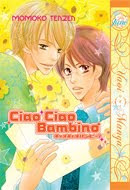 Book review: Live and Work in Japan
Book review: Live and Work in JapanBy: Erica Simms
Last post I talked about ‘Cruising in the Anime City,’ a book that doubles as a treasure map for any dedicated anime fan planning a trip to Tokyo. If that book was all fun, then today’s book is all work. ‘Live & Work in Japan’ is structured like a normal guidebook, but unlike travel writing that is meant for tourists and short-term visitors, ‘Live & Work’ is for people who are actually planning on buckling down and making a go of it in Japan. Before reading this book, I was a little unsure of how I would be able to navigate a new life in a country so different from my own. After reading ‘L&W in Japan,’ I feel that I at least know what challenges lie in wait for me and how to overcome them.
There are a few different things that help make this book fun to read as well as informative. First off, there’s a ton of first hand accounts from expats who have lived in Japan. Hearing about their struggles and achievements gives you a good idea of what to expect, and also a bit of hope (if they were able to do it, so can I). It also puts a human touch on things, something a lot of guide books end up lacking.
The lay-out makes it easy to find whatever information you’re looking for, and the book covers everything from how to have a social life in Japan to business etiquette to how to rent an apartment (which can be a trying and difficult experience in itself, but once you throw in foreign concepts like ‘key money’, a guidebook like this one comes in handy). It’s pretty much a step-by-step guide to living in Japan.
If there’s one complaint with the book it’s that while it’s full of practical information, it could use a little insight about what to do in more informal situations. For example, I’m a vegetarian, so in the section about food I was hoping to get some advice about how to politely decline meat and fish dishes. No such luck, though there is a lot of other interesting pieces of information.
The book is packed with addresses, telephone numbers, and useful websites. A blurb on the cover calls it “Essential,” and I have to agree. If you’re actually planning on moving to Japan, or if you just want a look at Japan that’s more in-depth than the usual guidebook, you should check it out.


